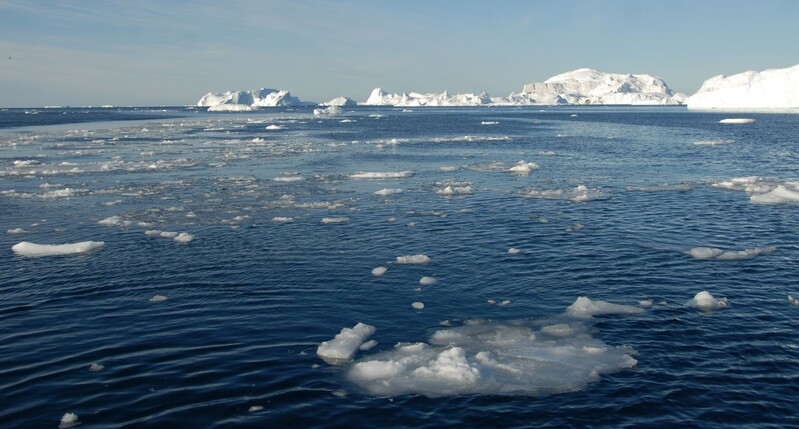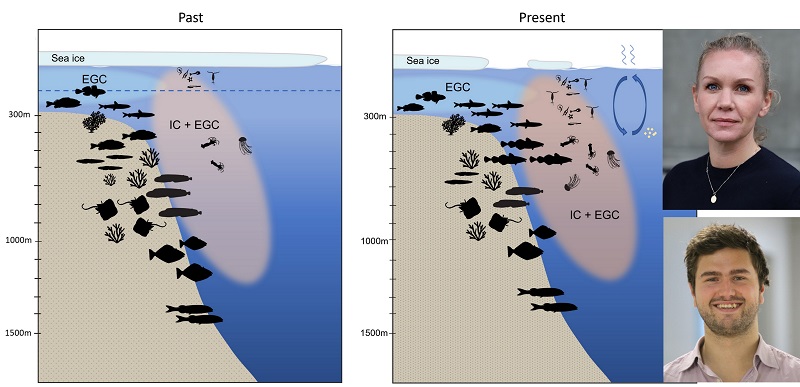News Archive
Exciting things are happening in Møreforsking every week, creating a long list of news. We are therefore providing search tools to easily help you choose the year, category or search term you are interested in:
Researchers discover rapid climate change related changes in the deep...

Researchers discover rapid climate change related changes in the deep sea
Researchers discover a connection between deep-sea fish and the impacts of climate change at the surface
An international team of experts under the lead of Margrete Emblemsvåg
from Møreforsking AS and the Arctic University of Norway and Dr. Karl-Michael
Werner from the Thünen Institute of Sea Fisheries in Germany discovered an unexpected
connection between bottom fish and the impacts of climate change in East
Greenland. While the researchers analysed long time series of data, they
observed that ecosystems from the surface to the sea floor responded
synchronously to changes in the atmosphere, sea ice concentration and sea
surface temperature – surprisingly these changes were most visible in deep sea
fish, which live below 400 meters. The study is recently released in the journal “Global
Change Biology”.
Researchers from the Thünen Institute of Sea Fisheries and the Greenland Institute of Natural Resources collected data on changes in fish communities in depth layers from 150-1500 meters for almost 20 years, from 1998-2016. Every year, they went back to similar spots off East Greenland to sample the fish community using a scientific bottom trawl net, resulting in a sample size of data collected at almost 1400 stations. “During the analysis of the fish abundance data, we realized that the changes were considerably stronger at depths between 350 and 1000 meters than in shallower regions. When it was statistically verified that these observations in the deep correlated with changes in the atmosphere, the biggest challenge was to develop hypotheses, how these things are connected”, says Margrete Emblemsvåg.
Ecological changes in the deep
The researchers used a statistical method called “tensor
decomposition analysis” for their data analysis, which allowed them to analyse
changes in fish abundances in time and space simultaneously. “The use of this
method does not have a long tradition of use in ecology, but has recently been
recognized for its applicability in understanding spatio-temporal dynamics in
multi-species fish communities” says Karl-Michael Werner from the Thünen
Institute. “One of the most striking results was that we observed changes in
much greater depths than expected”. Even in regions deeper than 400 meters the
researchers observed that boreal, meaning more warm-water adapted species, such
as tusk (Brosme brosme) or blue ling (Molva dypterygia), increased
in abundance, while Arctic and sub-Arctic species, such as Greenland halibut (Reinhardtius hippoglossoides) or Northern
wolffish (Anarhichas denticulatus) declined.
Transitional change and extreme events
The outputs from tensor decomposition displayed a rapid change in abundances
of fish communities in great depths in the years between 2005 and 2010.
Simultaneously, atmospheric temperature, sea surface temperature and sea
surface salinity rose, while the extent of sea ice declined during these years.
The results also showed short-term responses of deep-sea fish communities synchronous
to annual environmental variability and extreme years such as 2003, when sea
surface temperatures were exceptionally high. Fish communities in the deep sea
might therefore be sensitive to both “gradual” environmental change as well as extreme
events off East Greenland, which can lead to changes in ecological conditions
within a very short amount of time.
A lift to the deep sea?

Conceptual Illustration of past and present community structure in the East Greenland ecosystem along the continental margin. During the two last decades, sea surface temperatures increased whereas sea ice concentration decreased in the area. The changes in surface climate conditions likely led to the Atlantification process including less stratification and more mixing of the water column (as indicated by the blue dotted line in the left figure and the blue vertical arrows in the right figure). Fish symbols illustrate that the abundance of Arctic benthivore species decreased and the fish community became increasingly dominated by boreal generalists as a response to these environmental changes. This mainly happened at depths between 300 and 1000 m where the warm Irminger Current (IC) mixes with the cold East Greenland Current (EGC) Photos: Authors Emblemsvåg and Werner.
The scientific article based on the research project in Global Change Biology
Joint first authors: Møreforsking researcher Margrete Emblemsvåg
and Thune Institute researcher Karl Michael Werner.
The authors financial support from the CLIMA project, reference RER 15/0008, Ministry of Foreign Affairs Norway.
Contact:
Margrete Emblemsvåg
margrete.emblemsvag@moreforsking.no
004793288537
047194460369